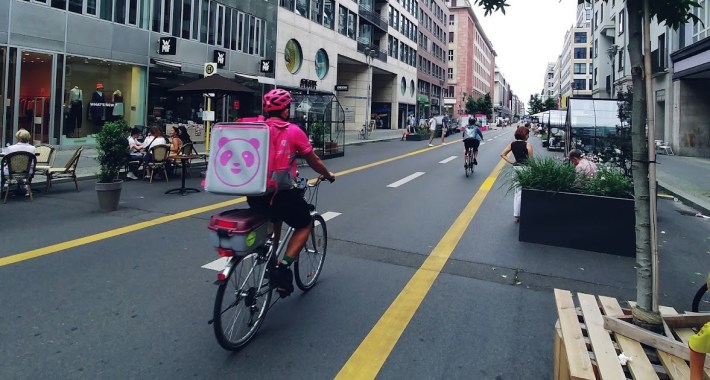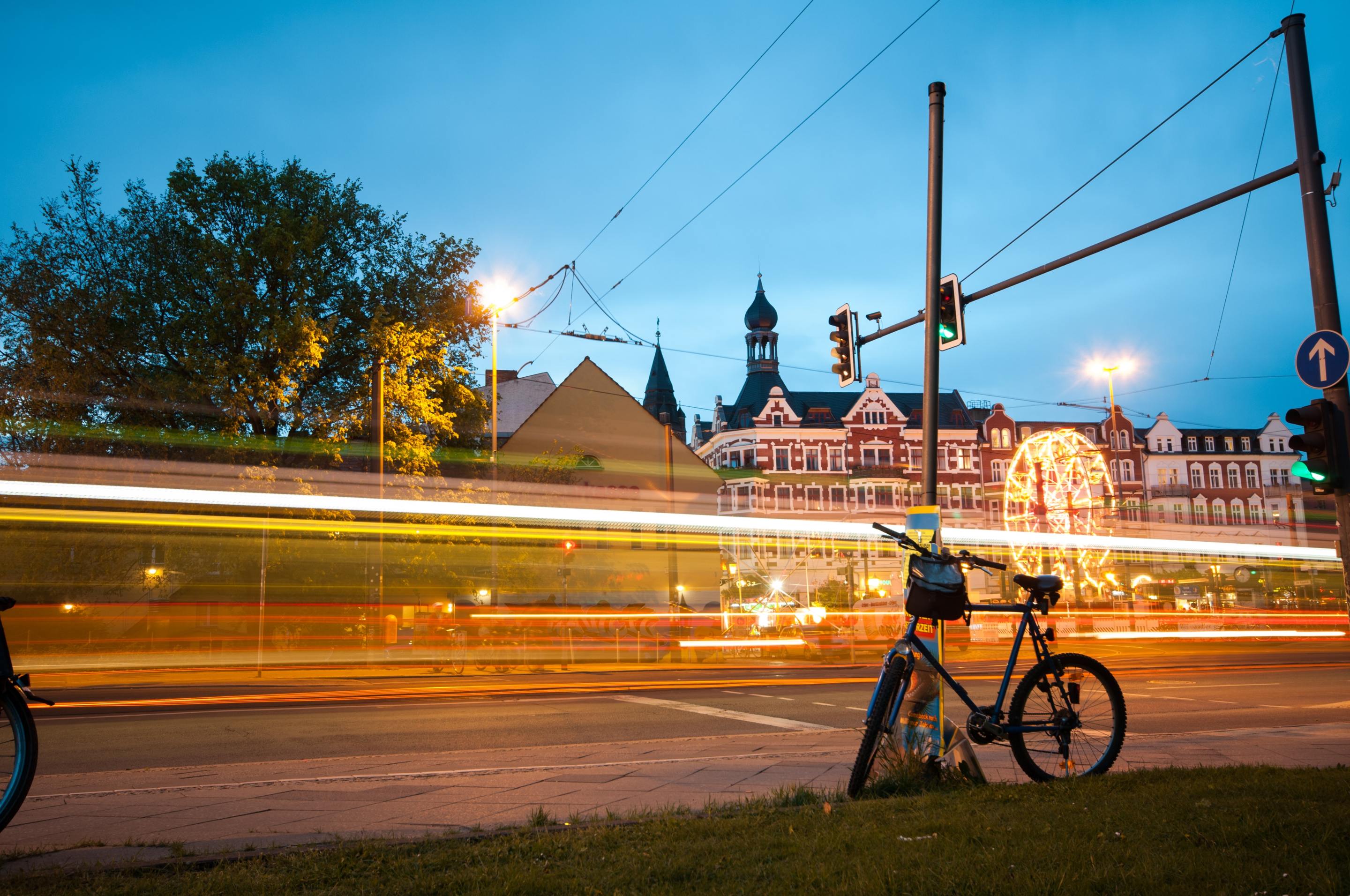Editor’s note: This article is part of the “Cycling Through COVID” series from world-renowned cycling researchers Ralph Buehler and John Pucher and is published with permission from the authors. In this series, we’ll explore how 14 large cities around the world adjusted their cycling policies during the first years of the COVID-19 pandemic, as well as how those policies contrasted with their approach in the decades prior. In each, Buehler and Pucher also explore how each city’s plans for future investment in cycling infrastructure and programs have been impacted by the pandemic.
Read the rest of the articles in this series as they’re published here, or check out the full article in Sustainability.
Berlin
Berlin is Germany’s largest city (3.5 million inhabitants) and capital. The share of trips by bicycle increased from 10 percent in 1998 to 18 percent in 2018. Berlin has a polycentric settlement structure with strong neighborhood centers. As a result, more than half of all daily trips are shorter than five kilometers and could easily be made by bicycle.
In 2018, Berlin adopted a new mobility law to reverse a decades-long trend towards increasing car use. The law prioritizes walking, cycling, and public transport with the goal of increasing traffic safety and equitable accessibility, reducing air pollution, noise, and traffic congestion, fighting global climate change, and distributing public space more fairly among transport modes.
During the COVID-19 crisis, permanently installed bicycle counters detected an increase by 22 percent in cycling from 2019 to 2020. In 2021, cycling levels were lower than in 2020, but still 14 percent higher than in 2019. There is great variability in trends among bicycle counters, with some reporting almost 30 percent more cyclists in 2021 compared to 2019, and others detecting decreases. Counters with less cycling in 2021 than in 2019 are typically along bicycle-commuter routes, such as the counter at Jannowitzbrücke (a bridge over the Spree River)
In response to COVID-19, Berlin built 25.9 kilometers of pop-up bicycle lanes along key arterial roads with multiple car travel lanes in each direction. The city’s intent is to make most of these pop-up bicycle lanes permanent. In August 2020, Berlin also pedestrianized a 500 meter stretch of Friedrichstrasse, the main shopping street in the center of the city, but included bi-directional bicycle lanes in the center of the street.

Berlin also continued the implementation of bicycle-friendly policies that were not in direct response to the pandemic. For example, in 2020, the city built an additional 6500 bicycle parking spaces and expanded the number and length of its bicycle priority streets (or fahrradstrassen) from 3.2 kilometers in 2020 to 11.1 km in 2021. In 2020, the city hired seven additional staff members to work on cycling issues (up from a total of six employees working on cycling issues in 2017 and 14 in 2019). To finance these pro-cycling measures, the city increased funding for cycling by 74 percent — to EUR 31 million per year in 2020 and 2021 — compared to 2019.
In 2021, Berlin adopted its latest cycling master plan, which is based on the 2018 Mobility Law. The plan sets a goal of at least 23 percent of all trips in Berlin to be made by bicycle by 2030. The plan calls for the creation of a tightly knit bikeway network that is no more than 400 m from 80 percent of Berlin residents, workplaces, and educational facilities. The main network will consist of 865 kilometers of priority routes (up from 494 kilometers currently). In streets with fast car traffic (speed limit more than 30 kilometers per hour) these priority routes will consist of protected bicycle lanes wherever possible, and lanes will be at least two meters wide (ideally 2.5 meters) so that cyclists can pass one another.
Additionally, the main bikeway network will include 100 kilometers of bicycle expressways, which will be especially wide to accommodate fast cycling (ideally three meters for cycling paths or lanes and four meters for bidirectional bicycle infrastructure). Complementary local networks of bikeways (1506 kilometers in length including two meters to 2.3 meters wide cycling paths or lanes along roadways with fast traffic) will connect to the main network, yielding a total of 2371 kilometers of bikeways in Berlin by 2030. The city will also increase the number of bicycle-priority streets within the main bikeway network and some local networks, and more one-way streets will be opened for bidirectional travel for bicyclists, thus increasing the flexibility of travel by bicycle.
Finally, the city plans to build 100,000 more bicycle-parking spaces by 2025 in public areas and at public-transport stations and stops. Other goals in the bicycle plan include better communication, monitoring, and evaluation of cycling activities.






